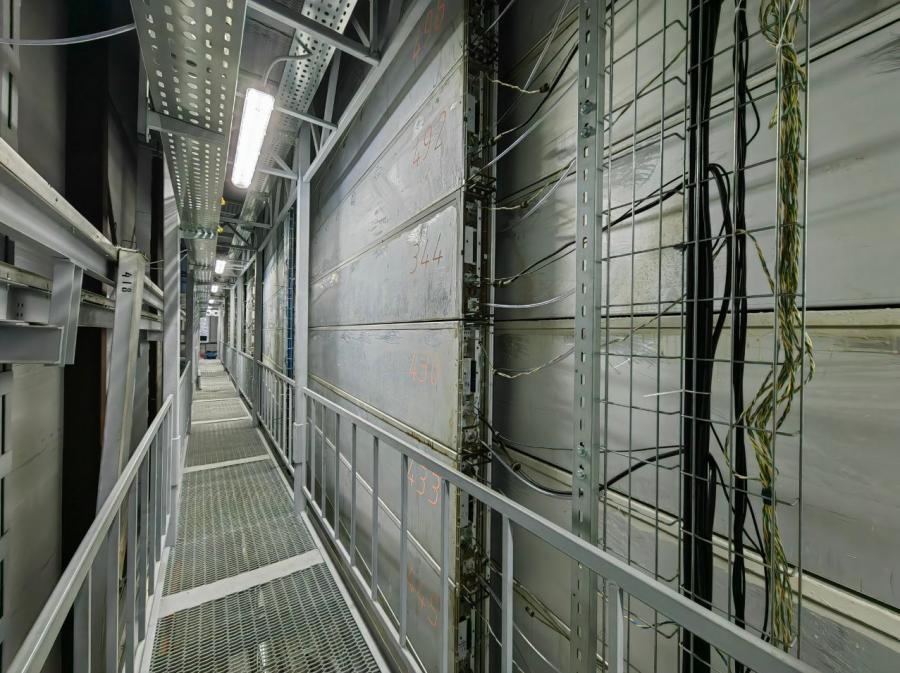The NEVOD Experimental Complex at MEPhI hosted the first launch of the inner plane of the world's largest coordinate detector TREK, designed for cosmic ray studies supported by the Priority 2030 program.

The use of the new detector will make it possible to expand the range of energies of cosmic rays studied in NEVOD to a record interval of 1014 - 1019 eV. It is in this energy region that a significant anomaly is observed - an excess of muons in the Earth's atmosphere, the “muon puzzle”.
The TREK detector consists of two planes of drift chambers (there are 264 chambers in total) with a resolution of 1 mm2, has an area of 250 mv2 and is intended for joint operation with a Cherenkov water detector with a volume of 2000 m3. The TREK will be finally assembled in 2024, and the Cherenkov water detector will be upgraded in 2025. An analysis of the data from these two detectors will make it possible to solve the “muon puzzle” and, in general, will push the search for new states of matter at energies inaccessible to accelerators.
The NEVOD-DECOR experiment has already made a significant contribution to the explanation of the “muon puzzle” by showing for the first time that ultrahigh-energy cosmic rays are responsible for the excess of muons. It is worth noting that an international group was created to explain this phenomenon, including representatives of such major experiments as the Pierre Auger Observatory (3000 km2) and IceCube (1 km3), but such a study can only be carried out in the NEVOD-TREK combination, therefore, in the foreseeable future, foreign scientific centers such experiments are not yet possible.
In 2022, with the support of the Priority 2030 program, the inner plane of the detector was assembled. And already in May of this year, the staff of the complex managed to obtain the first experimental data. Comparison of the first images of muons passing through TREK with other detectors of the complex showed good accuracy of the new setup. Based on the new data, further debugging of drift chambers and recording electronics will be carried out.
“When we fully launch our unique TREK detector, it will allow us to catch seven times more particles than now,” says Anatoly Petrukhin, founder and head of the NEVOD. “The most important thing is that no one can solve the muon puzzle except us, because we need two independent detectors, and now we have them: track and Cherenkov…”
And then we will be able to give an answer - where do these extra muons come from. If they have the same energy as the others, this will mean that something is coming to us from outer space or we incorrectly estimate the number of particles with such energies, but if there are more energies, then an excess of muons is formed in the atmosphere, and this is a new the process of their birth.





